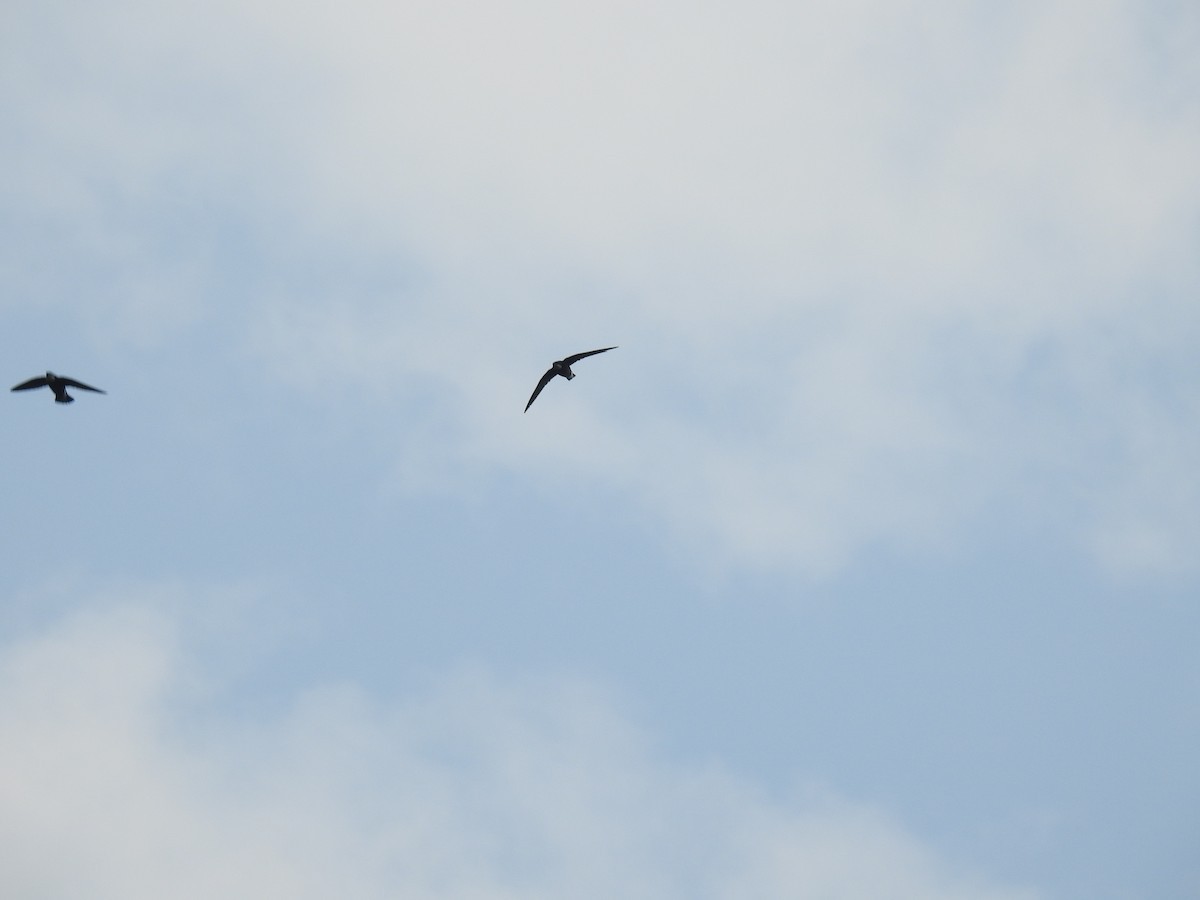White-throated Needletail
A species of Typical needletails, Also known as Spine-tailed Swift Scientific name : Hirundapus caudacutus Genus : Typical needletails
White-throated Needletail, A species of Typical needletails
Also known as:
Spine-tailed Swift
Botanical name: Hirundapus caudacutus
Genus: Typical needletails
Content
Description General Info
 Photo By Ashwin Viswanathan
Photo By Ashwin Viswanathan Description
The white-throated needletail (Hirundapus caudacutus), also known as needle-tailed swift or spine-tailed swift, is a large swift in the genus Hirundapus. It is reputed to reach speeds of up to 170 km/h (105 mph) in horizontal flight, but this is unverified because the methods used to measure its speed have not been published. They build their nests in rock crevices in cliffs or hollow trees. They do not like to sit on the ground and spend most of their time in the air. They feed on small, flying insects like beetles, flies, bees and moths. The white-throated needletail is a migratory bird, breeding in Central Asia and southern Siberia, and wintering south in the Indian Subcontinent, Southeast Asia and Australia. It is a rare vagrant in Western Europe and has been recorded as far west as Norway, Sweden and Great Britain. In June 2013, an individual was spotted in Great Britain after 22 years. It later flew into a wind turbine and died; its body was sent to a museum. White-throated needletails are large swifts with a robust, barrel-like body. They measure about 20 cm and weigh between 110 and 120 grams. They are greyish-brown except for a white throat and a white patch, extending from the base of the tail to the flanks. Needle-tailed swifts get their name from the spined end of their tail, which is not forked as it is in the typical swifts of the genus Apus. The white-throated needletail was first described by the English ornithologist John Latham in 1801 under the binomial name Hirundo caudacuta. Their current genus Hirundapus is constructed from the names of the swallow genus Hirundo and the swift genus Apus. The specific name caudacutus comes from the Latin words cauda meaning "tail" and acutus meaning "pointed". 
Size
13 - 23 cm
Nest Placement
Cliff
Feeding Habits
White-throated Needletail primarily consumes a diverse diet composed of insects, such as flying ants, beetles, true bugs, flies, wasps, termites, butterflies or moths, and grasshoppers. This bird captures prey in flight using its adept aerial hunting techniques. A unique dietary adaptation includes a preference for airborne insects, particularly during long-distance flights.
Habitat
The white-throated Needletail predominantly occupies wooded lowlands, river valleys, sparsely vegetated hills, and upland meadows or pastures across broad geographical regions that include subtropical and temperate zones. These birds are found across varied elevations, from sea level to mountainous areas at 4000 meters during feeding. During the winter, white-throated Needletail utilizes both coastal and high-altitude regions and are known to roost in tree hollows. They show adaptability, spanning habitats from tree-lined forest edges to non-forested environments and are occasionally spotted over woodlands in protected areas.
Dite type
Insectivorous
General Info
Feeding Habits
Bird food type

 Photo By Ashwin Viswanathan
Photo By Ashwin Viswanathan Scientific Classification
Phylum
Chordates Class
Birds Order
Swifts and hummingbirds Family
Swifts Genus
Typical needletails Species
White-throated Needletail